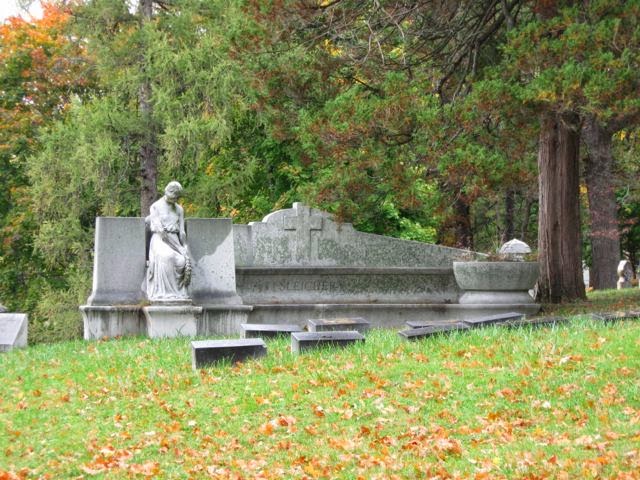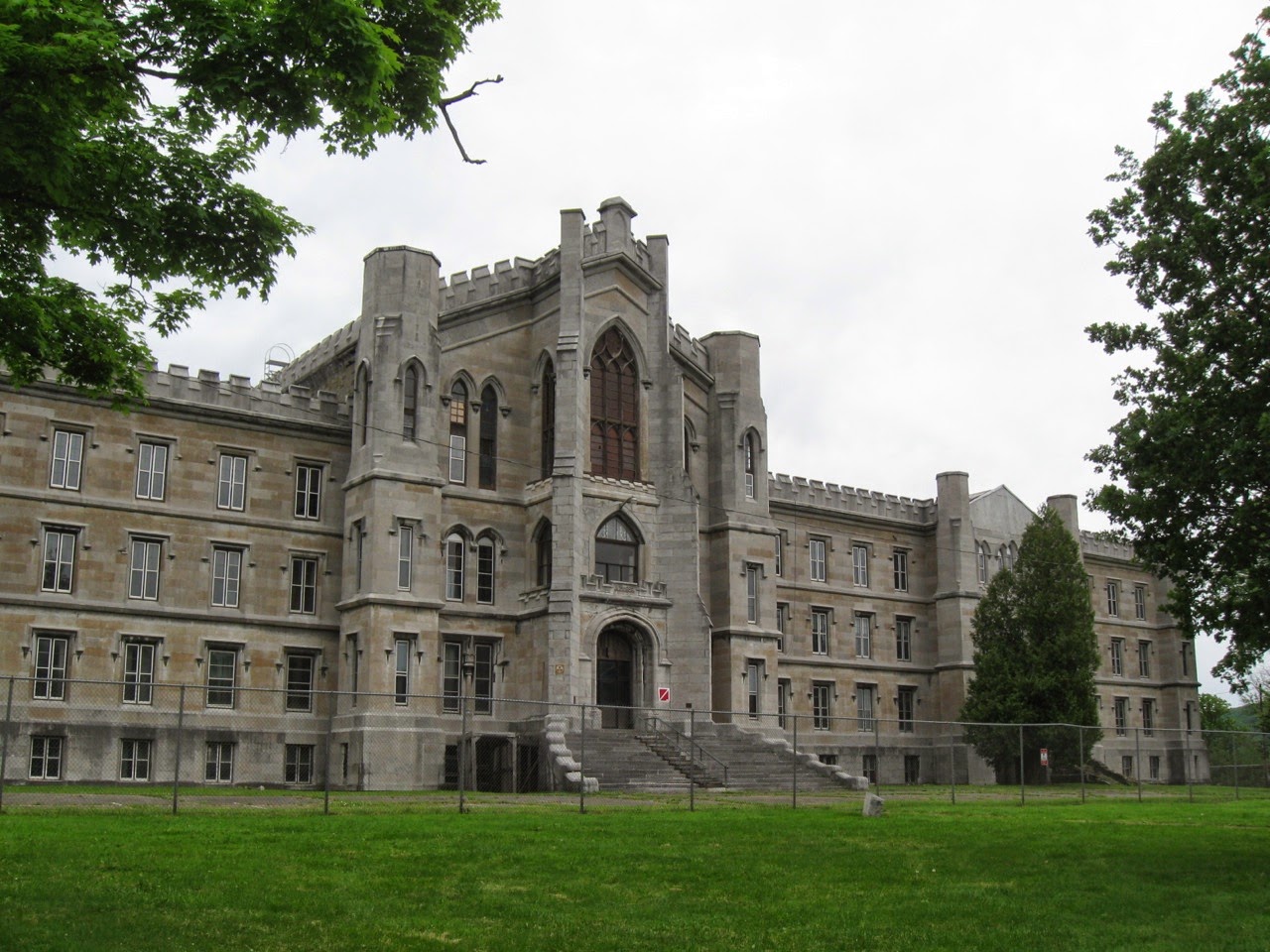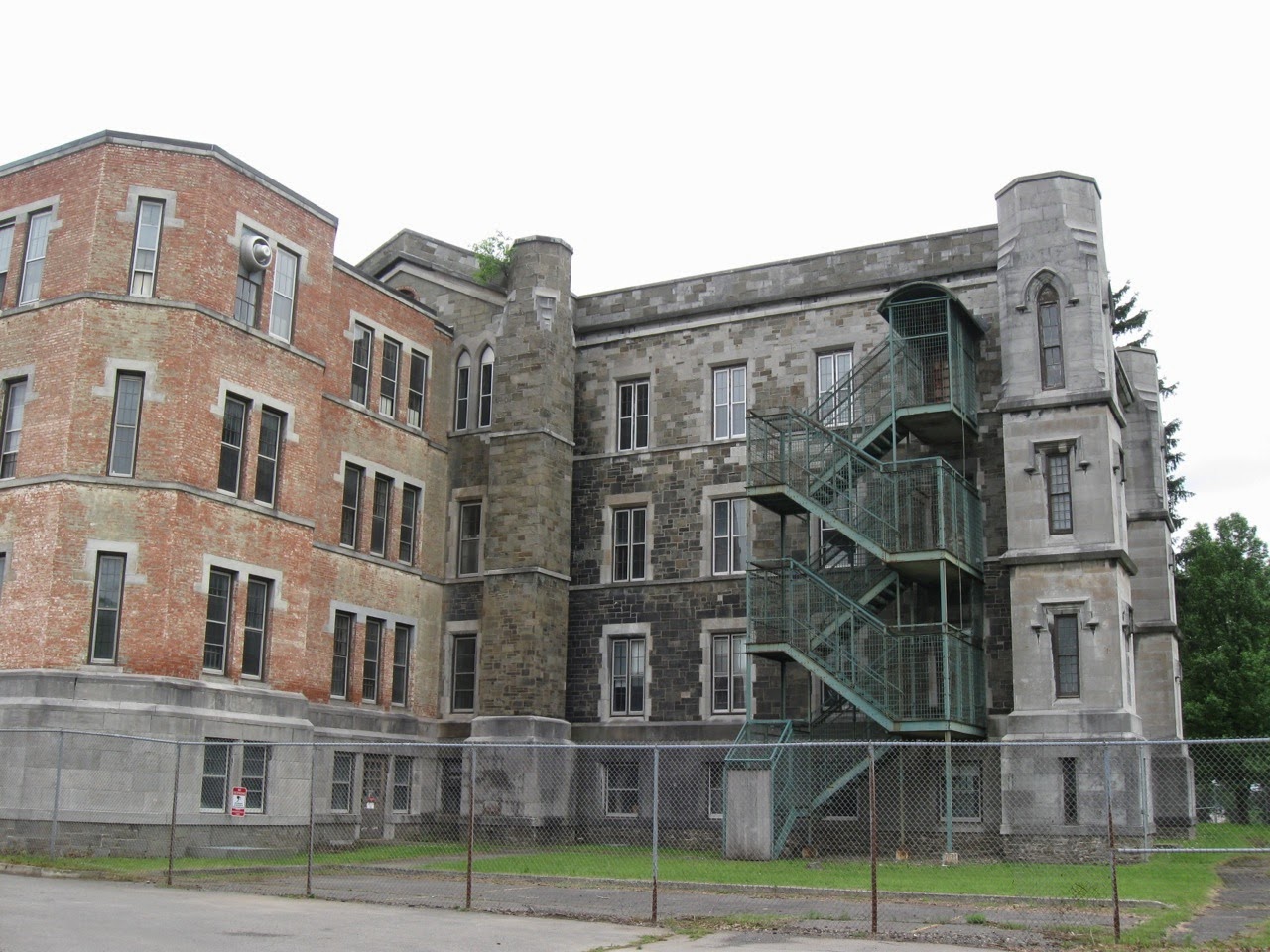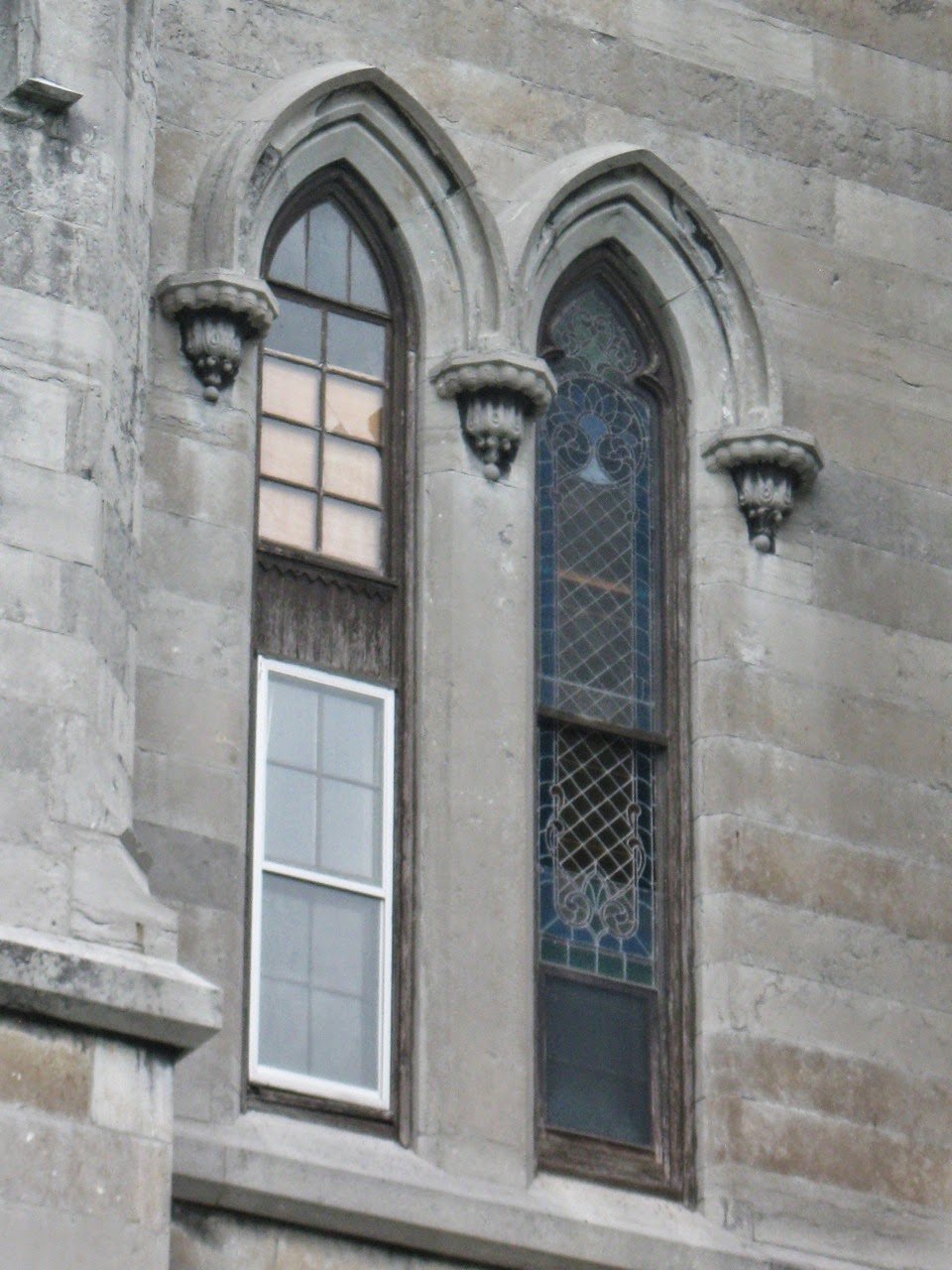 |
| 18 October 2014 |
By the early 19th century, the small cemeteries and burial vaults that
had been established within American cities during the colonial era were
overcrowded -- some so much so that they offered only
temporary storage for the dead -- and widely regarded as reservoirs of
disease. The rural cemetery movement, which first arose in England and France and
spread to the United States, was a
response to this situation. In sharp contrast to the cramped,
utilitarian, and typically sectarian burial plots that no longer met the
needs of burgeoning urban populations, rural cemeteries were expansive, non-denominational,
and attractively landscaped spaces that were meant to serve as permanent
resting places. The were designed to give visitors a beautiful, tranquil space in which to mourn and
to contemplate the fragility of human life. However, they quickly became
de facto parks for city dwellers seeking a respite from crowding, pollution, and noise. Their design heavily influenced the design of New York's Central Park, Albany's Washington Park, and many other urban parks created in the second half of the 19th century.
 |
| 18 October 2014 |
The first rural cemetery was established in Boston in 1831, and other cities quickly moved to establish their own rural cemeteries. Albany, New York established its
rural cemetery in 1844, and the nearby city of Troy established its rural cemetery,
Oakwood Cemetery, in 1848. Oakwood is one of the largest cemeteries in the United States, and at present it contains approximately 60,000 graves.
As of late, I've been returning again and again to this vast, beautiful city of the dead.
 |
| 13 December 2014 |
If you enter Oakwood via its main gate, you will quickly encounter the gorgeous
Gardner Earl Chapel. Gardner Earl (1852-1887) was the only child of an extremely wealthy Troy couple and an ardent champion of cremation. There were no crematoria in the Troy area at the time of his death, and his parents transported his body to Buffalo in order to have it cremated. In the wake of this experience, the Earls hired noted Albany architect Albert Fuller and told him to spare no expense in designing a chapel and crematorium that would honor their son's memory. The Richardsonian Romanesque chapel's interior features, among other things, eight Tiffany stained glass windows, intricate marble mosaics, and hand-carved oak pews and exposed beams. The crematorium remains in operation today.
 |
| 13 December 2014 |
If you walk onto the covered walkway that connects the chapel to its south tower, you'll have a commanding view of the Hudson River Valley. Oakwood is situated on an escarpment overlooking the valley, and as a result you can often see the valley and, in some places, the river itself as you explore the grounds.
 |
| 18 October 2014 |
Oakwood, which appears wholly natural but was in fact carefully engineered, was designed by Philadelphia engineer John C. Sidney. He was assisted by Troy native Garnet Douglass Baltimore, the first African-American to graduate from the Rensselaer Polytechnic Institute. Oakwood was added to the
National Register of Historic Places in 1984.
 |
| 18 October 2014 |
Oakwood is the final resting place for many of Troy's most prominent citizens and families. Samuel Wilson (1766-1854), the meatpacker who supplied canned provisions to the U.S. government during the War of 1812 and in the process became the progenitor of a national symbol -- "Uncle Sam" -- is perhaps the most widely known of these individuals. Wilson's gravestone is actually quite small; the modern memorial depicted above was installed in 1931 by his granddaughter.
 |
| 7 December 2014 |
Emma Willard (1787-1870), the pioneering educator who established the Troy Female Seminary (now the Emma Willard School) and insisted that girls could and should study mathematics, science, philosophy, and all of the other subjects then reserved for boys, is also buried here. Her son and daughter-in-law, who took over the school in 1838, are buried next to her.
 |
| 18 October 2014 |
Nine Civil War generals are buried here. Joseph P. Carr (1828-1895) was born in Albany to Irish immigrants, began his military career as a colonel, and rose to the rank of major general. He distinguished himself at Gettysburg and Malvern Hill, played a key role in recruiting the Second New York Militia (also known as the Troy Regiment), and commanded a division of the U.S. Colored Troops. After the war, he was active in Republican politics and was thrice elected Secretary of State.
 |
| 18 October 2014 |
Russell Sage (1816-1906) was a Whig politician, railroad company executive, and financier. After his death, his widow, Olivia Slocum Sage, established the Russell Sage Foundation, which supports social science research, and Russell Sage College, a women's college located in downtown Troy; the college's coeducational junior college and graduate programs are situated in Albany. She also supported other organizations that conducted social science research, safeguarded the public health, and advanced the education of women. Sage's mausoleum was purposely left unmarked.
 |
| 18 October 2014 |
Troy was a booming industrial city at the time Oakwood was established, and its wealthiest inhabitants purchased family plots and purchased elaborate monuments. Some families of means favored memorials that featured exquisite sculpture. The mourner atop the gravestone of Ephraim and Sarah Waldron is a particularly beautiful example.
 |
| 18 October 2014 |
Other wealthy families recognized that Oakwood served as both a place of mourning and commemoration and as a leisure destination for the area's inhabitants. The Schleicher family monument is one of several that feature benches encouraging visitors to sit down for a while and enjoy the surroundings.
 |
| 13 December 2014 |
Other affluent families built ornate mausoleums. Oakwood is home to twenty-four of them, most of which are Gothic Revival or neoclassical in style. The Tibbits Mausoleum, which houses the grave of Troy mayor and U.S. Representative George Tibbits (1763-1849) and other family members, is a superb example of the former.
 |
| 18 October 2014 |
The Green family mausoleum, built in an Egyptian Revival style, is a fascinating exception. I can't tell whether it was built in the middle of the 19th century, when Egyptian-influenced design became popular in the United States for the first time, or sometime after the 1922 discovery of Tutankhamun's tomb brought the style back into vogue. I'll need to do some research; fortunately, Oakwood's archives are largely intact.
 |
| 11 November 2014 |
Oakwood is still an active cemetery, and its managers anticipate that it won't run out of room until some time in the 23rd century. For the most part, the headstones in the newer sections of the cemetery are smaller and simpler than many of the older markers. The striking modernist memorial marking the grave of Roy Whitwell is a noteworthy exception, and it has become one of my guideposts.
 |
| 11 November 2014 |
Eight weeks ago, my mother and I had to select my father's final resting place. We chose Oakwood because of its beauty and because we both thought that Dad, history buff that he was, would find it an interesting place. Dad was also fascinated by the Hudson River, and I purposely chose a burial plot that features a view of the valley. I took the photograph above while standing at the head of his grave, which is about seventy-five feet to the west of the Whitwell memorial.
 |
| 18 October 2014 |
Oakwood may be a city of the human dead, but it is teeming with life. Squirrels, chipmunks, and rabbits abound, Canada geese have established themselves at the pond close to the cemetery's eastern entrance, and ducks swim in the cemetery's four other ponds. According to cemetery personnel, deer, woodchucks, foxes, muskrats, opossums, coyotes, skunks, porcupines, other mammals, and a wide array of birds also make their homes in Oakwood.
 |
| 13 December 2014 |
We experienced a Nor'easter earlier this week. Downtown Albany and the Troy neighborhood in which my mother lives got about six inches of snow, but the escarpment on which Oakwood sits got substantially more; my father's headstone is currently covered by a foot of snow. The heavy, wet snow brought down many tree branches and at least two whole trees. Oakwood's grounds crew is cleaning up the mess as quickly as it can.
As I walked and drove around yesterday afternoon and noted the storm damage, it struck me that the trees, many of which were planted long before any human currently alive was born, are also subject to the ravages of time. Every living thing is. And yet life itself continues (at least for now). New trees will gradually replace the old ones, the young squirrel I startled as I drove toward my father's grave will soon be followed by future generations of squirrels, and tiny new people keep being born.
This thought isn't particularly original, and it isn't new to me. The chaplain who led my father's memorial service devoted a substantial amount of time to it, and I couldn't help but notice that the hospital room in which my father received one horrible test result after another was a few floors directly above a birthing center. However, I suppose it helps to be reminded of it from time to time.
 |
| 13 December 2014 |
As I got closer to the downed limb, I was startled to discover that some of its branches were sitting atop one of my favorite monuments. Several generations of Ruoffs are buried in the surrounding family plot, and the family monument was obviously crafted by a skilled monumental mason and was deliberately left incomplete.
Death so often leaves all manner of unfinished work and loose ends in its wake. Oakwood is one of the few places in which this sad truth seems bearable.

































